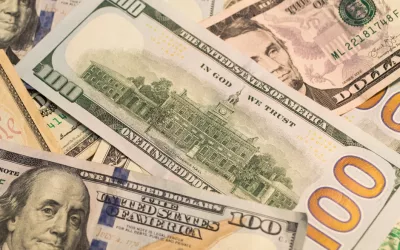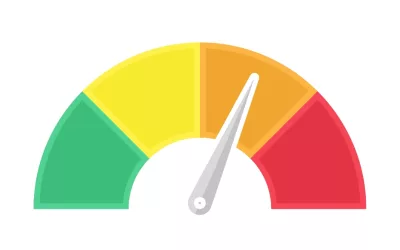Student loan debt has exploded over the previous three decades. In 1995, the total federal student loan balance was $187 billion. In 2022, the total federal student loan balance was an estimated $1.617 trillion. Combining this with rising housing prices, both renting and buying, it is getting more challenging to afford a house in America.
At Capital City Mortgage, we assist and guide you through the process to help you afford the house you want and can afford. Below we will review the different types of loans and look at how they will calculate your student loan payment. Sometimes there is only one good choice when determining what program to use when buying a house.
We will look at Fannie Mae, Freddie Mac, FHA, VA, and USDA, and they all provide guidance to handle the various circumstances surrounding student loan repayment options.
Fannie Mae – Student Loans
Fannie Mae requires a monthly payment to be included for all student loans, even if the monthly payment amount is $0.00.
- Student loan payments will begin within 12 months, or the monthly payment has already begun.
- If the credit report reports a monthly payment amount greater than $0.00, the lender will qualify the borrower based on this amount.
- If the credit report shows no payment or $0.00, the lender will request documentation from the borrower documenting the correct monthly payment.
- Deferred Payments
- The lender will use a payment of 1% of the outstanding student loan balance for qualifying purposes.
- For example, using a $25,000 student loan balance.
- The qualifying monthly payment would be $250.
Freddie Mac – Student Loans
Freddie Mac guidelines tend to be a little more forgiving than Fannie Mae’s.
- Student loans in forbearance, deferment, or in repayment.
- For borrowers with a monthly payment greater than $0.00 on their credit report, this would be the qualifying payment.
- For borrowers with no payment or $0.00 reporting, Freddie Mac would use 0.5% of the loan balance as the qualifying payment.
- For example, using a $25,000 student loan balance.
- The qualifying monthly payment would be $125.
- For example, using a $25,000 student loan balance.
FHA – Student Loans
FHA offers very straightforward guidance for student loan qualifying payments.
- All outstanding loan balances, regardless of current status.
- If the credit report shows a payment greater than $0.00, this would be the qualifying payment.
- If the credit report shows a payment of $0.00, the qualifying student loan payment would be 0.5% of the loan balance.
- For example, using a $25,000 student loan balance.
- The qualifying monthly payment would be $125.
- For example, using a $25,000 student loan balance.
- The borrower may also use the written documented payment provided by the student loan provider.
VA – Student Loans
VA guidelines tend to be the most forgiving of all the agencies.
- If there is documented proof that the student loan repayment is not to begin within the next 12 months, VA guidelines will allow the payment to be excluded from the calculations.
- If a current monthly payment or payment will be required within the next 12 months, there is a process to calculate the qualifying payment.
- The “threshold” payment is calculated by taking 5% of the outstanding loan balance and dividing it by 12 months.
- For example, using a $25,000 student loan balance.
- The threshold payment would be $25,000 x 5% / 12 = $104.17
- As you can see, this is the lowest calculation of the agencies.
- For example, using a $25,000 student loan balance.
- If the reported payment is higher than the threshold, the higher payment will be used.
- If the threshold payment is higher than the actual payment, the lower payment may be used by documenting the terms of the student loan and the monthly payment.
- The “threshold” payment is calculated by taking 5% of the outstanding loan balance and dividing it by 12 months.
USDA – Student Loans
USDA traditionally has some of the lowest default rates in the mortgage loan industry. One of the reasons is they have some of the toughest guidelines. That being said, their student loan guidelines are usually in line with the others.
- Even if the borrower has a forgiveness plan for the student loan, the lender must still use the documented or calculated estimated payment for qualification.
- If the credit report shows a payment greater than $0.00, this would be the qualifying payment.
- If the credit report shows a payment of $0.00, the qualifying student loan payment would be 0.5% of the loan balance.
- For example, using a $25,000 student loan balance.
- The qualifying monthly payment would be $125.
- For example, using a $25,000 student loan balance.
With so many student loans in forbearance during the last few years, it is important to get the best information you can from your loan officer. If a borrower with a $75,000 student loan tries to qualify for a Fannie Mae loan, they may use a qualifying payment of $750. Instead, if the borrower explored a Freddie Mac option, the qualifying payment may only be $375.
Contact Capital City Mortgage today with any questions or concerns about qualifying for a mortgage with a student loan. We are here to help you get the best loan for your situation.
What are my mortgage down payment options?
When it comes to purchasing a home, one of the most important aspects to consider is the down payment. Unless you have the ability to pay for a house in cash, a mortgage and down payment will be necessary. But what are your options when it comes to making a down...
How do I improve my credit score?
Your credit score is a critical factor that lenders use to determine your creditworthiness and assess your risk level as a borrower. Whether you're looking to apply for a mortgage, car loan, or credit card, having a good credit score is crucial for obtaining favorable...
What is Mortgage Insurance?
Purchasing a home is often considered one of life's biggest investments. However, not everyone can afford to pay the full purchase price upfront. To bridge this financial gap, most individuals rely on mortgages, which are loans offered by financial institutions for...




